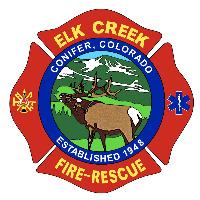Wildland Fire Seasonal Outlook December 2021 - March 2022
- ElkCreekFireDepartment
-
 Topic Author
Topic Author
- Mountain Legend
-

Predictive Services
National Interagency Fire Center
Issued: December 1, 2021
Next Issuance: January 1, 2022
Outlook Period – December 2021 through March 2022
Rocky Mountain: Significant wildland fire potential across the Rocky Mountain Area (RMA) is expected to be normal from December through January. However, the first half of December could be elevated at times along the Front Range and across the High Plains during warmer, drier, and windy periods before snow eventually covers the fuels in these areas.
For the winter, La Niña is expected to split the RMA from north to south with the warmest and driest influence and conditions remaining across southern Colorado along with most of Nebraska and Kansas, while cooler and more moist weather should be confined to Wyoming, South Dakota, and portions of northern Colorado. Climate models also indicate a gradual weakening of the La Niña signature to more of an ENSO neutral state in early spring. This strongly suggests that an onset of a transitional and severe weather pattern with strong winds, frontal passages and attendant lightning may set in across the central Great Plains as early as February or March.
Since September, the northern half of the geographic area has benefitted from several wet events, including winter storms, but the southern half has not seen appreciable moisture this fall. The expectation for the RMA outlook is normal significant fire potential through January, though there could be a period in the first part of December when the potential may elevate for a few days along the Front Range and across the High Plains. This is due to the shortfall of moisture during the late summer and fall and how that has impacted the condition and availability of fuels in these areas. During dry and windy episodes that occur before snow covers the fuels, there will be brief periods of elevated fire potential, but overall anticipation is it will be near normal potential in this area through March.
In case of emergency, please dial 911.
elkcreekfpd.colorado.gov/
Facebook Page
303-816-9385 (Office Hours M-F 8:00-4:30)
This email address is being protected from spambots. You need JavaScript enabled to view it.
Please Log in or Create an account to join the conversation.






